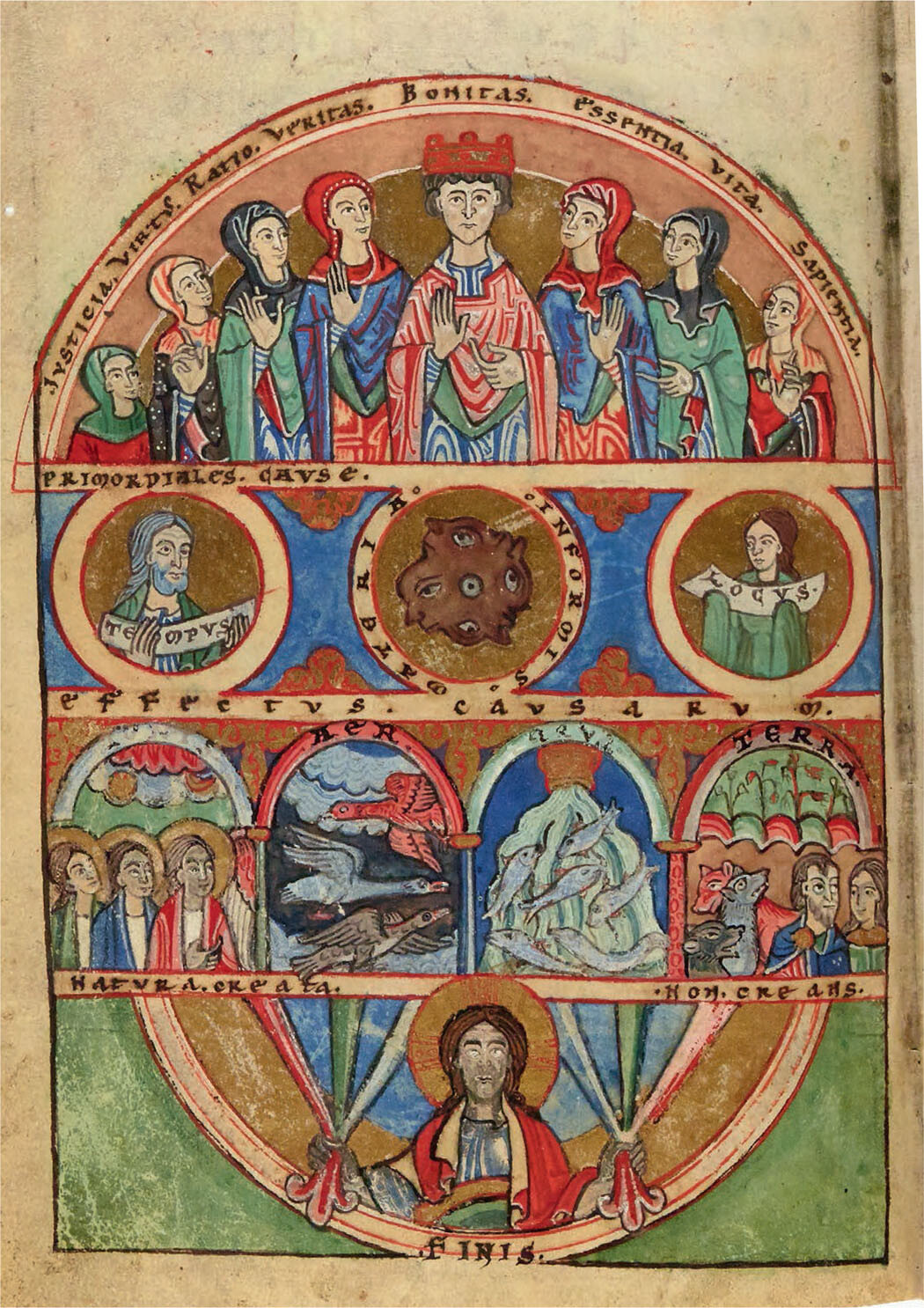← Back to June 2025 Newsletter Contents

(photo: Jason Ramolo)
The Department for the Study of Religion (DSR) is pleased to announce that, for the second year running, first place in the Canadian Society for the Study of Religion Undergraduate Essay Prize has been awarded to one of Professor Alexander J.B. Hampton’s students. The 2024 winner is James Nowak, for his paper, “Regarding Creation: Praise, Visual Perception, and Double Movement in John Scottus Eriugena’s Periphyseon”. Professor Hampton noted that “it has been a pleasure to work with James. Eriugena is a fascinating mediaeval thinker, difficult but rewarding to study. James’ intellectual curiosity, and close, patient style of reading was well suited to the challenging material. I am delighted his intellectual achievement has been recognised on a national level.”
A Specialist in Mediaeval Studies at St Michael’s College, James will graduate in Spring 2025. Read on to learn about his journey of discovery in the study of religion.
James Nowak’s initial interest in coming to U of T as an undergraduate was in mediaeval English, and in Old English poetry in particular. Well into his degree, the first course he took in the DSR was RLG318H, “Sacred & Secular Nature in the Christian West,” with Professor Alexander J.B.Hampton. In his inquiry into his own ecological concerns, Nowak had been trying to read Charles Taylor’s 2007 book, A Secular Age, a lengthy philosophical and historical examination of the reasons behind the West coming to accept a disenchanted world as the normal state of affairs, but couldn’t get beyond the first couple of hundred pages. “When I saw the course,” he says, “I thought maybe that would help me understand Taylor’s work better.
“I really loved the course and how the skills I’d acquired in medieval studies, like close reading and language analysis, could be applied to the study of religion. I’d never felt more intellectual freedom and the freedom to apply my skills as I did in Professor Hampton's class. We were reading philosophy texts, the work of mystical theologians, Plato, and more. It just seemed like you could never get bored with it! What I especially appreciated was the disciplined way that you could approach the meaning of the texts and then read these meanings against modern personal and societal problems. It was so interesting to me that there is a rigorous, scholarly way to do that. A premise of the class – and of Professor Hampton’s own work – is that the ideas of historical thinkers can be useful for addressing the current and developing ecological crisis.”
... a tree branch or a hummingbird has the same revelatory potential as a Bible verse. It’s a profound statement with enormous ecological significance.
The experience of that course led directly to Nowak’s taking the Independent Studies course RLG491H, working on “Developing a Historical Understanding of Participatory Metaphysics,” again under Professor Hampton. The paper he wrote for that directed reading course won first place in the 2024 CSSR Undergraduate Student Essay Prize. John Scottus Eriugena was a ninth-century Irish philosopher and Nowak was interested to explore the role of praise in Eriugena’s Periphyseon, a five-volume dialectic treatise of apophatic theology. (Apophasis is the rhetorical device of raising a topic by stating that it will not be mentioned – for example, ‘We won’t discuss her dishonesty’. In theology, it refers to attempts to understand God by describing what God is not, since God is beyond human understanding.)
 One thing that gripped Nowak in the Periphyseon was the value that Eriugena grants to nature. As Nowak explains: “Eriugena says there are two ways to know God: through scripture and through creature. I am less interested in what ‘God’ is, than in how Eriugena grants the created world the same tautological value as the Bible, the sacred text in his tradition.
One thing that gripped Nowak in the Periphyseon was the value that Eriugena grants to nature. As Nowak explains: “Eriugena says there are two ways to know God: through scripture and through creature. I am less interested in what ‘God’ is, than in how Eriugena grants the created world the same tautological value as the Bible, the sacred text in his tradition.
"The formulation ‘scripture and creature’ seems to suggest that a tree branch or a hummingbird has the same revelatory potential as a Bible verse. It’s a profound statement with enormous ecological significance. The next question, then, is how Eriugena thinks one ought ‘read’ creation: in other words, how do you look at the tree, or the hummingbird?”
“So that’s the question I brought to his work – and I’m far from the first person to think of it!: How do you look at things? It seems so simple, but I've never been trained in how to look. We all have so many things vying for our visual attention. How does one actually look? What is the relationship between one's inner disposition while looking and the thing itself? How does that disposition affect one’s experience of what they see? So many questions – it’s just endlessly fascinating to me.
“I'm a bit of a latecomer to the DSR, but I am glad it happened like it did because it has been exciting to apply the skills acquired through medieval studies to the domain of the study of religion. I hope to go on to graduate study, as I would very much like to keep exploring the relationship between gratitude and visual perception. The word “regard” captures it: it means ‘to think highly of’, ‘to hold in esteem’ – but it also means ‘to look’. I am interested in the possible relationships between gratitude and visual perception. And I have the DSR and Professor Hampton to thank for helping to spark, and to foster, that interest.”
The illustration shown to the right is "Creation" from Honorius Augustodunensis's compendium, Clavis Physicae (second half of the twelfth century), which included Eriugena's Periphyseon. (Source: Bibliothèque national de France)
[See this article for a profile of Audrey Miatello, also Professor Hampton’s student, who took first prize in the 2023 CSSR Undergraduate Essay Contest.]


